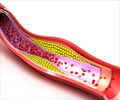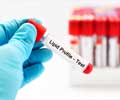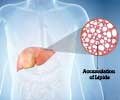Brown adipose tissue which transforms energy from food into heat and contributes to thermal regulation produces several kinds of lipids in response to cold, can help control blood sugar.

‘The lack of brown fat in obese individuals may account for their obesity and even for their increased risk of diabetes.’





The study's first author is Luiz Osório Leiria, a researcher at the University of Campinas's Biology Institute (IB-UNICAMP) in São Paulo State, Brazil.The research was conducted as part of his postdoctoral fellowship at the same university's School of Medical Sciences (FCM-UNICAMP) during a research internship at Dr. Yu-Hua Tseng Lab at Joslin Diabetes Center, an independent institution affiliated with Harvard Medical School in the US, with support from São Paulo Research Foundation - FAPESP and the American Diabetes Association.
Currently, Leiria has a research grant from the FAPESP Young Investigator Grants (YIG) program.
White adipose tissue, one of the two types of adipose tissue in mammals, including humans, stores excess energy as fat. The other kind is brown adipose tissue, which converts energy from food into heat and contributes to thermal regulation. Brown adipose tissue produces several kinds of lipids in response to cold. One of these lipids is 12-HEPE, whose function was unknown until the group discovered that blood sugar was reduced more efficiently in obese mice treated with 12-HEPE than in untreated mice after they were injected with a concentrated glucose solution.
According to a published paper, the beneficial effect of 12-HEPE on glucose tolerance in obese mice was due to its promotion of glucose uptake into both skeletal muscle and brown adipose tissue.
Advertisement
The explanation may be that the proportion of brown fat mass is lower in obese individuals than in lean individuals. Moreover, the lack of brown fat in obese individuals may account for their obesity and even for their increased risk of diabetes.
Advertisement
During the study, another group of healthy lean volunteers received doses of mirabegron, a drug that is normally prescribed as a medication to treat a urinary syndrome known as overactive bladder but can also activate brown adipose tissue. The control group was given only a placebo.
The patients who received the drug were found to have increased plasma levels of 12-HEPE. This suggests that the drug could be prescribed as a treatment for diabetes in the future.
"Mirabegron has several effects, some of which are undesirable. It activates the release of various other lipids and does not specifically target glucose reduction. An omega-3 lipid such as 12-HEPE would have a far more desirable toxicological profile," Leiria said.
US researchers are currently conducting tests to measure the effects of relatively low doses of the drug on blood sugar levels.
The next step is to determine which receptor 12-HEPE bonds in order to promote glucose uptake, enabling scientists to develop novel molecules that stimulate the receptor in question.
Source-Eurekalert















